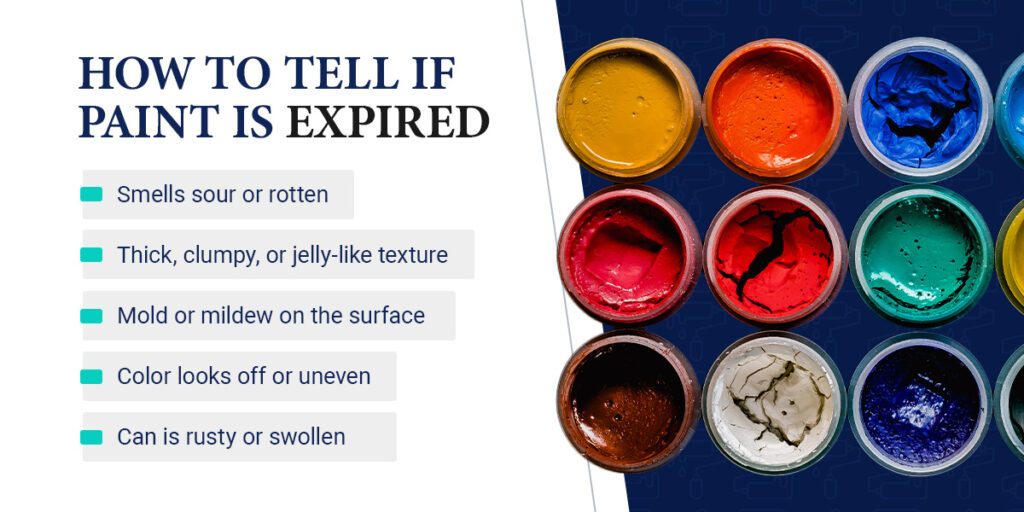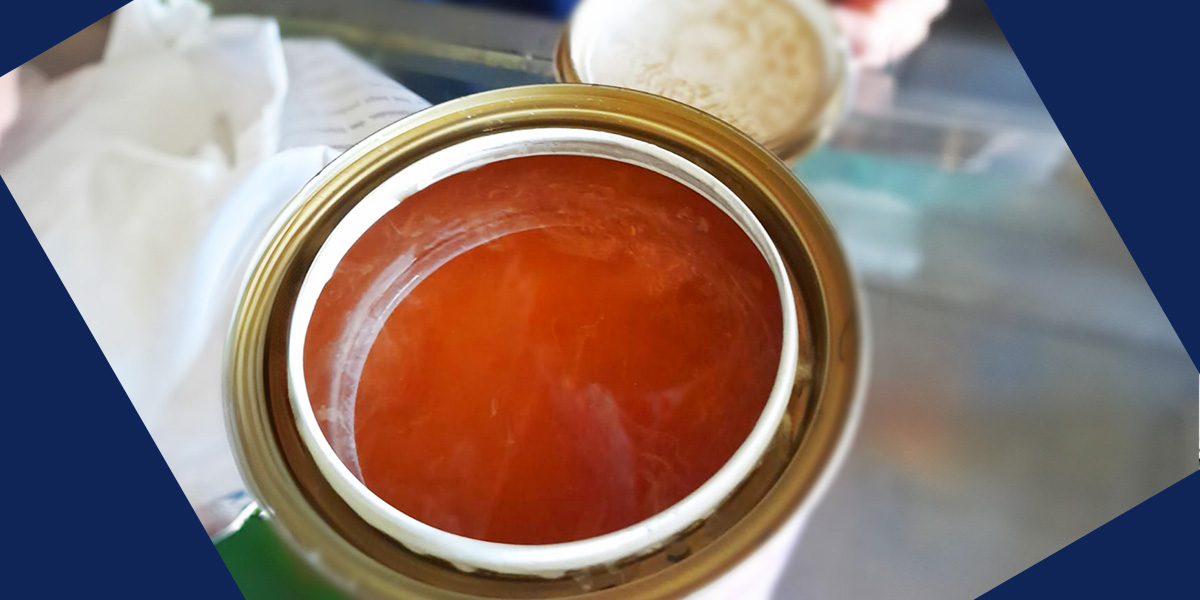Over time, even good paint goes bad. Have you ever opened an old paint container to find a weird smell or chunky texture? Then you’ve encountered paint past its prime. From that can of exterior paint to the acrylic paint in your craft box, every type of paint has a shelf life. Sealed, unopened containers can outlast opened ones by years. But temperature, air exposure and moisture can affect even closed cans.
Wondering if your paint is worth saving? Let’s break down the lifespan of different paints and how to tell if yours has expired.
How Long Does Paint Last?
Paint shelf life depends on what’s inside the can. Oil-based paints last longer than latex paint. Brands matter too, since formulas can differ across manufacturers.
Here are the average lifespans of common paints:
- Acrylic paint: 2 to 10 years
- Chalk paint: Up to 1 year
- Latex paint: 2 to 10 years
- Limewash paint: 5 to 10 years
- Oil-based paint: Up to 15 years
Factors That Affect Paint Longevity
Not all paint ages the same way. A can stored in a climate-controlled basement will last longer than one forgotten in a hot garage. How you handle, seal and store your paint makes all the difference.
- Opened vs. unopened: The clock ticks faster once you open the lid. Exposure to oxygen thickens and destabilizes the paint formula.
- Proper sealing: The smallest gap between the lid and the container can let air in. Without adequate sealing, paint can develop a skin on top or dry out completely.
- Temperature swings: Freezing temperatures can ruin latex paints, separating the ingredients. High heat dries them out. Climate control is the secret to long-lasting paint.
- Moisture: Damp environments can cause cans to rust, letting air in. Moisture also creates a breeding ground for mold inside the can itself.
Can You Use Old Paint?
While you can use old paint, it’s best to avoid it. Beyond losing quality, old paint can become unsafe. When paint goes bad, the chemical balance shifts, leading to unpredictable results. The sour smell of expired latex paint can spread to your walls. Even worse, mold-contaminated paint poses health risks like respiratory problems or allergic reactions. Getting separated or hardened oil-based paints to adhere to surfaces is tricky.
Then, there’s performance. Old paint dries unevenly, leaving streaks, clumps or a streaky finish. You might spend hours rolling on coat after coat, only to watch it peel off within weeks. Avoid gambling with expired paint. If the can passes the tests in the next section, you may be able to use it. If not, skip the frustration with new paint.
How to Tell if Paint Is Expired

Does your paint belong on the wall or in the trash? Take note of these telltale signs that your paint is past its prime:
1. The Smell Test
Fresh paint can have an overpowering but clean smell. Bacterial growth inside bad paint gives it a sour, rancid odor. Think rotten eggs, curdled milk or swamp water. If you open the lid and your nose recoils, avoid using it — unless you want your home to have that same smell.
2. Texture Trouble
Healthy paint is easy to stir. Expired paint becomes clumpy, lumpy and jelly-like. While latex paint may form a natural film, a thick skin on the paint’s surface signals a deeper problem. Stir the paint to mix it thoroughly. You can also try adding a little paint thinner to oil-based paints or water to water-based paints. If these steps fail to restore the consistency, it’s best to say goodbye.
3. Mold or Mildew
Black or fuzzy spots in your paint mean mold growth. This harmful fungus creeps in through gaps in the lid, contaminating the paint. Dispose of moldy paint at a waste facility.
4. Color Changes
Discoloration is a sure sign of outdated paint. Look for whites that have gone yellow or deep shades that have turned light. A little color separation is normal. Over time, solids sink, leaving liquid at the top. Try stirring the paint to blend the formula, or take it back to the paint store and ask them to mix it for you. If the paint stays separated, discard it and buy a new can.
5. Rusted or Damaged Can
A rusty or puffed-up can means that contaminants may have gotten in. According to Consumer Reports, organisms inside the can release gas, causing it to bulge. To check if rust has infiltrated the paint, open the can carefully. If you notice rust flakes on the surface, discard it since using rusty paint will stain your surfaces.
When in doubt, test a small section before committing. This simple step can save you from realizing that your paint has gone bad in the middle of a project.
Paint Storage Tips
Follow these tips for storing leftover paint to extend its lifespan:
- Seal it properly: Wipe the rim clean before sealing. Place plastic wrap over the open can and hammer the lid to create a tight seal. Turning the can upside down can help with sealing.
- Use a new container: Half-empty cans have more air inside. Transfer leftover paint into a smaller glass or plastic container with an airtight lid.
- Pay attention to temperatures: Store your paint in a cool, dry area. Temperature fluctuations can affect the paint’s integrity. Too hot and paint may dry out or even become flammable. Too cold and water-based paints may separate and become clumpy. Keep cans on shelves out of direct sunlight.
- Label the cans: Adding a label to your cans can help you later. Include the purchase or last use date and where you used the paint. Note the color if you transferred the paint to a different container.
- Keep paint clean: Pour paint into a tray rather than dipping rollers or brushes into the can. Dirty brushes can introduce bacteria or dirt.
How to Dispose of Expired Paint in Ohio
Discarding old paint isn’t as simple as throwing it out or pouring it down the sink. The Ohio Environmental Protection Agency recommends drying out latex paint before putting it in the trash. Use cat litter, sawdust or a paint hardener and leave the lid off the can.
Oil-based paints need more careful disposal since they are flammable. Take your old oil-based paints to a household hazardous waste (HHW) collection site. Contact your local environmental waste agency to find your nearest HHW site. You can also search the Earth911 database for recycling solutions.
In Dayton, you can dispose of paint at the Montgomery County Transfer and Recycling Facility.
Partner With the Professionals for Your Next Painting Project
Don’t take a chance with expired paint! Ditch the old cans and upgrade your space with The Ohio Painting Company®. We use only premium paints stored and applied the right way. Located in Dayton, Ohio, our professionals deliver flawless finishes that last for years. We respect you, your time, your budget and your property.
Partner with a team that delivers excellence in every brush stroke. Contact us today to request a free estimate.







